Down House, Kent: the house where Charles Darwin lived for almost 40 years
In 1927, the house and garden where Charles Darwin lived for nearly 40 years were saved for the nation as a monument to his research and ideas. John Goodall investigates. Photographs by Paul Highman.
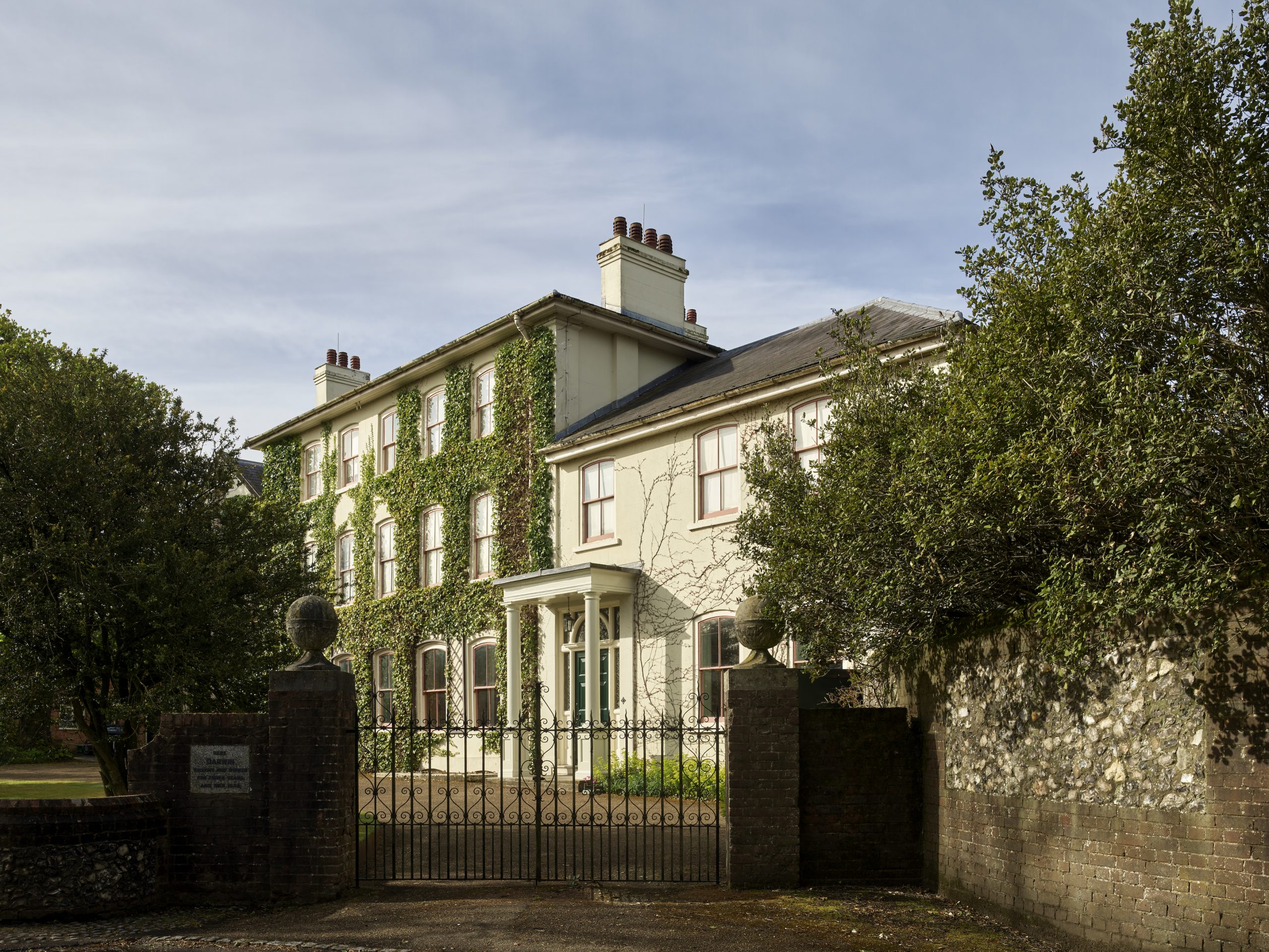

At 8.30pm on August 31, 1927, the membership of the British Association for the Advancement of Science (BAAS) gathered in the auditorium of the Majestic Theatre in Leeds for the inaugural meeting of its annual conference. After a few preliminary formalities, the new president of the association, the anatomist Prof Sir Arthur Keith — who assumed his role from no less a figure than the Prince of Wales — stepped up to the podium to deliver an address entitled ‘Darwin’s Theory of Man’s Descent as it stands today’.
Sir Arthur explained that, 69 years before in 1858, when the BAAS had previously met in Leeds, its then president had used his address to argue that, although Man had clearly existed on earth for much longer than Biblical chronology suggested, it was absurd to argue that he was ‘merely a transmuted ape’. That lecture, Sir Arthur suggested, was the first salvo in a controversy that would fundamentally change perceptions of the origins of man; what he characterised intellectually as one of the ‘marvels of the 19th century’.
The riposte to this analysis, Sir Arthur continued, was being formulated in ‘the village of Downe in the Kentish Uplands’. There, he explained, on the day of the president’s 1858 lecture, Charles Darwin ‘sat in his study struggling with the first chapter of a new book; but no one foresaw... that the publication of the completed book, The Origin of the Species, 15 months later (1859), was... to initiate a new period in human thought — the Darwinian Period — in which we still are’.
There was a vote of thanks for the address, but the new president had not finished. According to The Times report, he got up again to urge ‘the advisability of purchasing for the nation the home and surrounding in which Charles Darwin worked and which were the cradle of ideas that had transformed the outlook of man... in order that mankind in the future might realise better the personality which was always so great a factor in scientific progress. The surroundings... were already threatened by a speculative builder’.
The property in question, Down House (confusingly, next to Downe village) was Darwin’s family home for nearly 40 years. In its rooms, gardens and grounds, he researched and refined the ideas for which he became famous. The idea of buying houses associated with celebrated individuals in England looks back to the Romantic movement and the example of the Shakespeare Birthplace Trust. Its founding initiative was to purchase Shakespeare’s family house when it came on the market in 1847. By 1927, there were plenty of other precedents to follow, although all of them related to literary figures.
Preserving the house of a scientist, therefore, was an unusual variation on what had become a familiar theme. It placed Darwin in an intellectual pantheon and aimed to preserve as a monument for posterity the place in which he had lived and worked. By implication, Down House and its grounds also offered insight into his work and stood as an inspiration for those who came there.
"Preserving the house of a scientist placed Darwin in an intellectual pantheon"
Darwin was born in Shrewsbury, Shropshire, on February 12, 1809, and had two false starts in his professional life, the first of which took him to Edinburgh in 1825 to qualify as a physician and then to Cambridge, to become a clergyman. He came from an affluent family and could afford to make such mistakes.
Sign up for the Country Life Newsletter
Exquisite houses, the beauty of Nature, and how to get the most from your life, straight to your inbox.
In 1831, however, he received an invitation to volunteer as a naturalist on board HMS Beagle for her five-year journey ostensibly to survey the South American coast. It was a voyage that, by his own assessment, ‘determined my whole career’.
Darwin’s correspondence and discoveries aboard Beagle began to attract attention even before his return in 1836. Thereafter, he stayed briefly in Cambridge and then took lodgings in London, where he developed a wide circle of friends both within and outside the scientific world.
In the same period, he began to suffer from the stomach problems that would dog his health for the remainder of his life. He also began to consider marriage, meticulously drawing up a list of pros and cons, to help him decide as to whether it was a sensible course of action.
His chosen bride, whom he married on January 29, 1839, was a first cousin, Emma Wedgwood. The connection delighted both families, cementing ties that dated back to the 18th century and the friendship between Erasmus Darwin (1731–1802) and Josiah Wedgwood (1730–95), both members of the celebrated Lunar Society. It would prove a happy marriage, although Charles later worried that his close relationship to Emma might be the cause of the ill health that many of their 10 children suffered.
The couple began their married lives in London, but, in 1842, with two young children and a third on the way, they decided to move out of the capital to their future marital home, Down House.
London was not felt to be a healthy environment for children — Victoria and Albert began their search for a family home at Osborne on the Isle of Wight the following year — but Darwin was also concerned about the social stigma attached to the ideas he was developing and about the demands of London.
The new house lay within easy striking distance of the capital yet stood seemingly removed, as he described it, ‘at the extreme verge of the world’.
In origin, Down House was a plain Georgian property, a brick box with a main front five window bays wide built in about 1730. It was internally reconfigured and extended with a kitchen block by a wealthy businessman and landowner, George Butler, after he purchased the house in 1778.
At the same time, the main entrance was moved from the front to the side of the building. The house was then leased and sold again before coming into the possession of the Revd J. Drummond, vicar of Downe, in 1837. He employed the London-based architect Edward Cresy to make various improvements and also to render the house in conformity with the taste of the moment.
It was this house, with its 18 acres of land, that the Darwins occupied on September 24, 1842. Charles quickly settled into his new home, establishing a regular routine that distinguished his domestic arrangements. ‘My life goes on as clockwork,’ he wrote in 1843, ‘I am fixed in the place where I shall end it.’
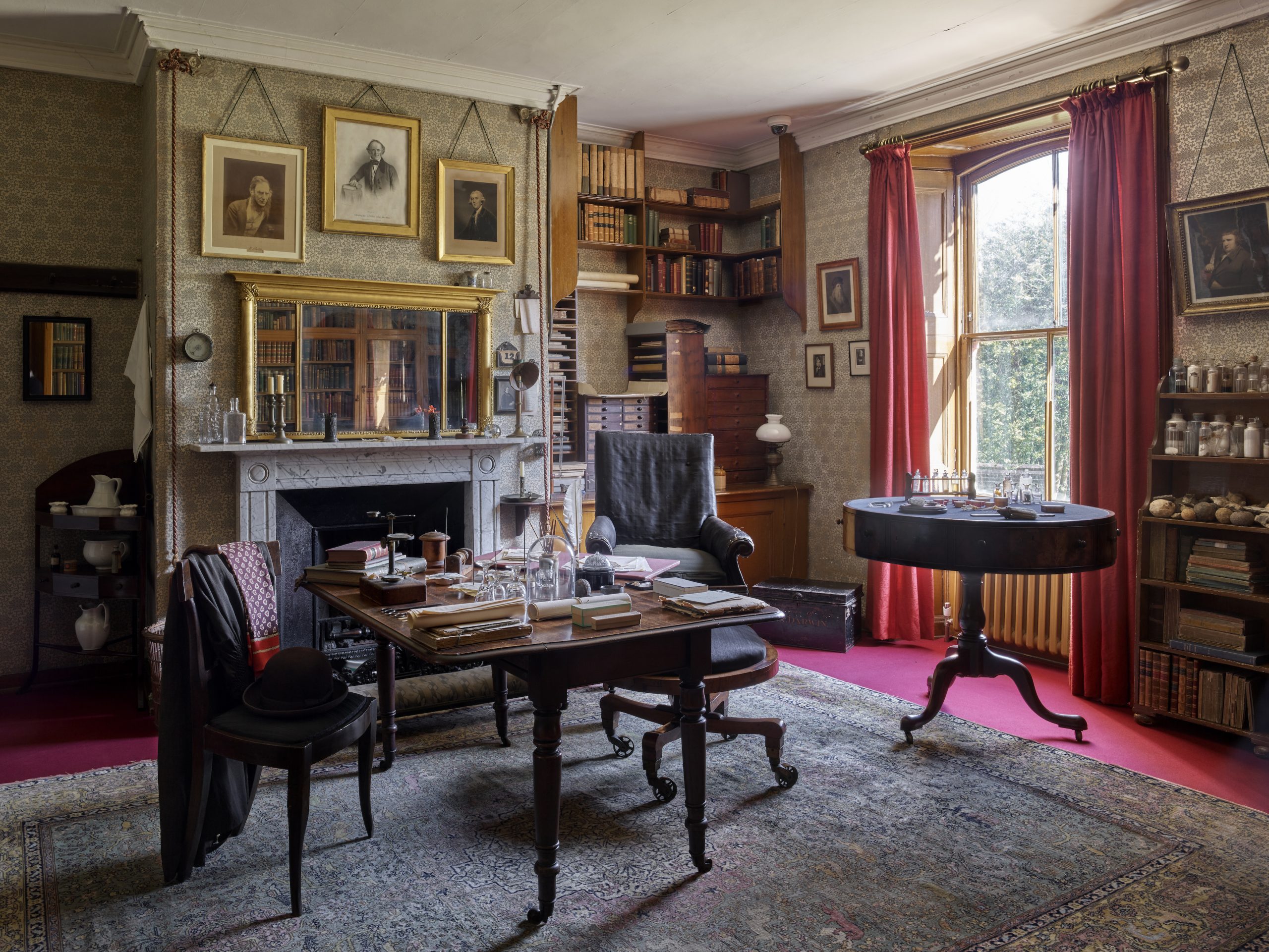
He initially occupied a study on the north side of the ground floor of the house within one part of the original 18th-century plan. At the same time, the couple undertook their first alterations to the building, which would continue by fits and starts into the 1870s against the background of a busy and happy family life. Indeed, much of our impression of his domestic life here derives from the reminiscences of his children, who clearly adored him.
In 1843, probably again under the direction of Cresy, a three-storey projecting bow window was created to the rear of the house. The Darwins also moved the main door to its present position just to the right of the original entrance front.
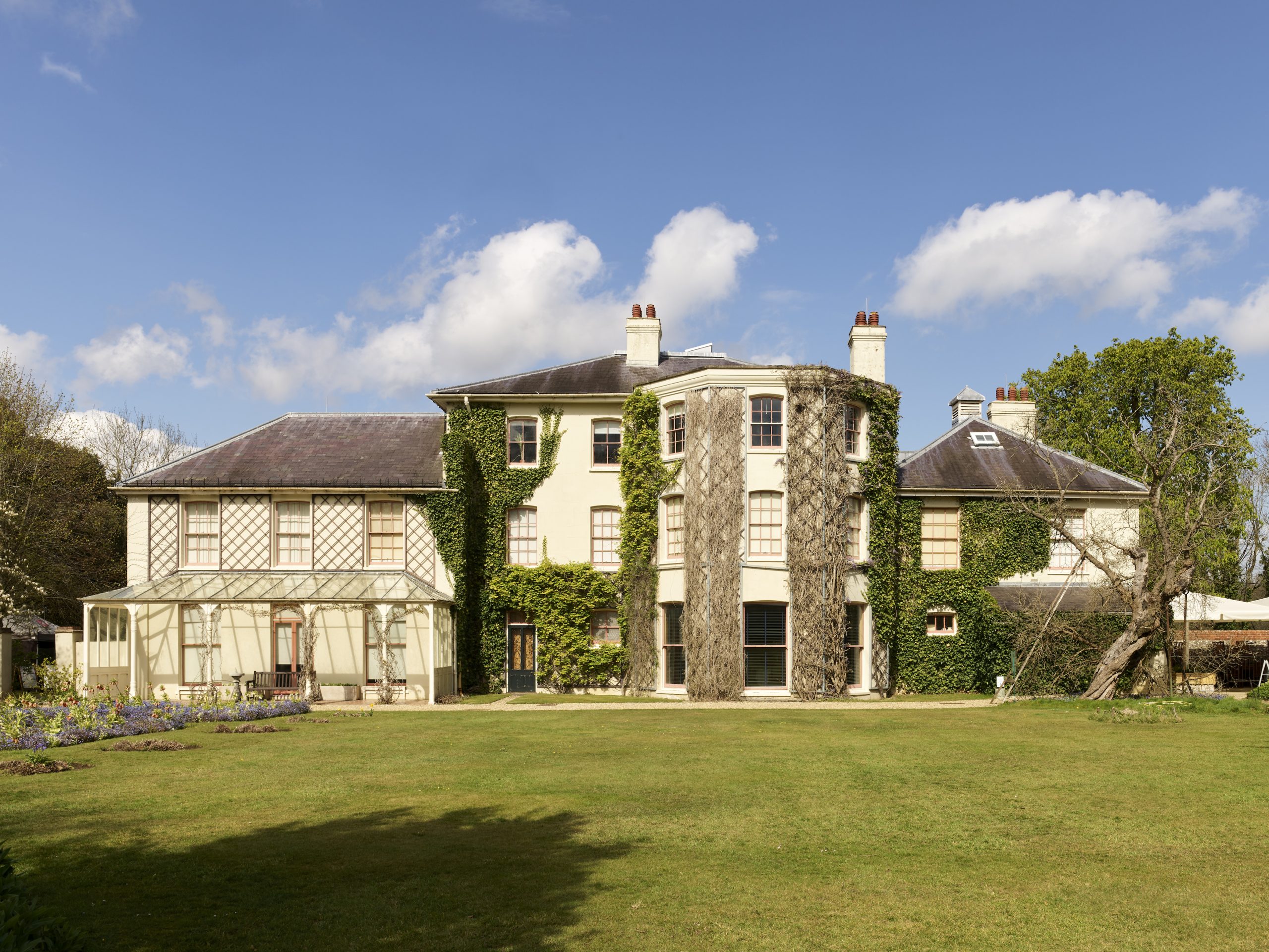
Privacy was a concern and, to prevent passers-by from looking into the house, Darwin paid a builder to lower the level of the lane outside and lined it with a brick wall.
Three years later, in 1846, with the family growing steadily, the Darwins asked Cresy to rebuild the 18th-century kitchen extension with a nursery above it to the south of the house. Then in 1858, following the birth of their 10th and last child in 1856, and having outgrown the available space again, they extended the opposite side of the house with what became the drawing room.
The former drawing room with its bow window became the dining room and the old dining room was converted into a billiard room, the game being a new enthusiasm for Darwin after a period of treatment at the hydropathic resort at Moor Park, Surrey.
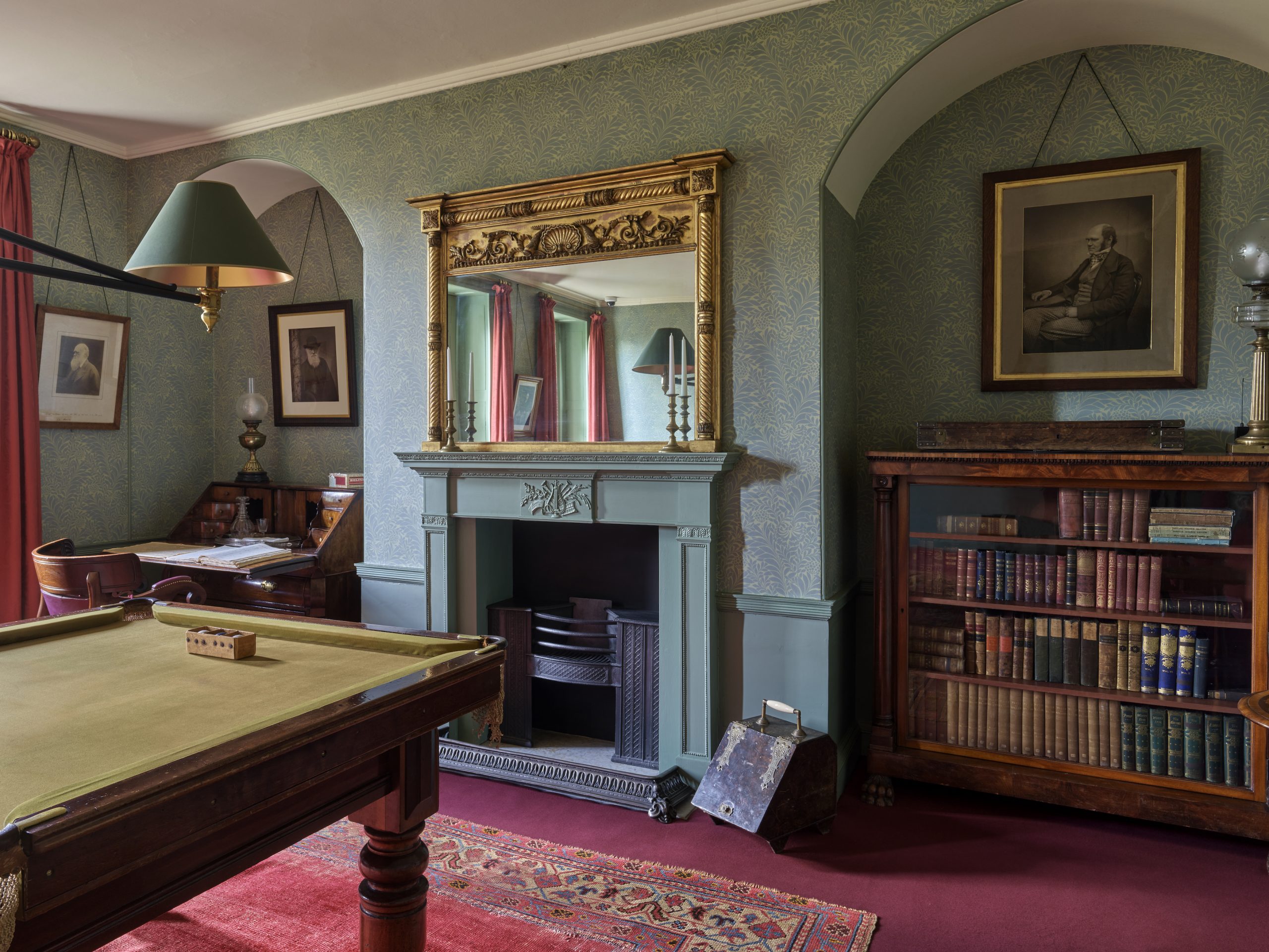
So far, Darwin had kept his ideas about evolution to himself, although he had already committed them to paper in a pencil sketch of 1842. This sketch he placed in a cupboard by the garden door in the staircase hall (Fig 2), with instructions to his wife that it be published in the event of his sudden death.
He did, however, continue to develop his thoughts, working on a study of barnacles, as well as conducting observations and simple experiments in the garden. This he expanded with an orchard in 1844 and the Sandwalk in 1846, the latter a quarter-mile path that created a circuit for daily exercise and thought.
"My life goes on as clockwork. I am fixed in the place where I shall end it"
When On the Origin of Species by Means of Natural Selection was published in 1859, Darwin stayed well clear of the controversy that it generated, remaining firmly out of the limelight at Down. There his research continued with the construction, for example, of the first of several hothouses in the garden over the winter of 1862–63. Friends and admirers, such as Ernst Haeckel from Jena University in Germany, visited him here.
In a letter dated October 28, 1868, Haeckel commented on how worn the house appeared and also the daily regimen of life, which concluded with backgammon each evening. He was concerned, however, at Darwin’s poor health. In 1872, a glass-covered verandah was added to the back of the house.
Meanwhile, Charles continued to publish, with work on orchids appearing in 1862, The Descent of Man, and Selection in Relation to Sex (1871) and a paper on The Movement and Habits of Climbing Plants (1875).
The Darwins undertook a final round of work to the house in 1876, creating a new study at the angle between the original house and the drawing room. A creature of exacting habit, learnt in part from the experience of living in the extremely confined quarters of HMS Beagle, he precisely recreated the arrangement of furniture in his old study.
Darwin died at Down House on April 19, 1882, and was dignified with burial at Westminster Abbey, a striking mark of the recognition he enjoyed. Emma and the family decamped to Cambridge, but she returned to the house every summer until her death in 1896 at the age of 88.
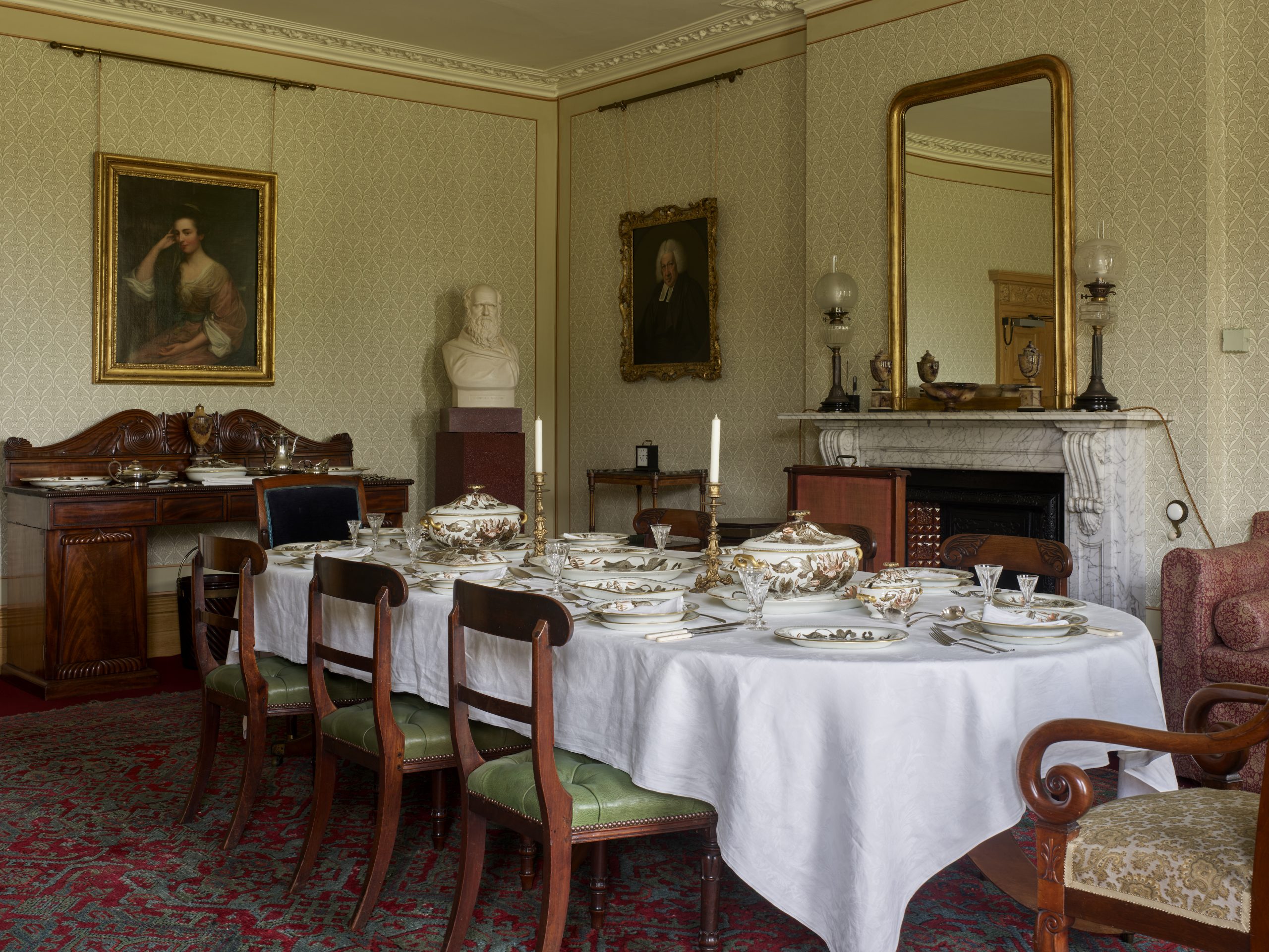
The house was then leased in 1907 and became Downe School for Girls, which moved to new premises in 1922. Another school failed and the house stood empty, hence the concern over development expressed by Sir Arthur in 1927.
Far away in London, the philanthropist and surgeon Sir George Buckstone Browne read about the proceedings at Leeds in the newspaper and immediately sent a telegram to offer his support. He not only volunteered £4,250 to purchase the house, but a further £10,000 for repairs to the property, clearing away changes made by the school.
One of the Darwins’ surviving children, Leonard, played a particularly important role in the work, organising for the return of family objects (many of them are still on loan in the house) and recreating the ‘Old Study’ that was used by his father until 1876.
Thus presented, the house opened as a museum in 1929, first under the BAAS and then, from 1953, by the Royal College of Surgeons. In the late 1980s, it briefly passed to the Natural History Museum, then, in 1996, became the responsibility of English Heritage.
There followed two years of restoration work before the house was reopened to the public in 1998. It now appears with most of the downstairs rooms recreated as they appeared after 1876, using photographs taken by Leonard Darwin and with many of the original pieces of furniture returned to them through the generosity of the family.
In 2016, the Darwins’ bedroom was also renovated. Elsewhere, the first floor contains exhibitions about Darwin and a replica of his cabin on HMS Beagle. The garden, where he undertook so many experiments, has likewise been the focus of restoration. Passing along the Sandwalk today, it’s not hard to imagine the figure of Darwin deep in thought, pacing along with an ironshod walking stick.
Visit www.english-heritage.org.uk
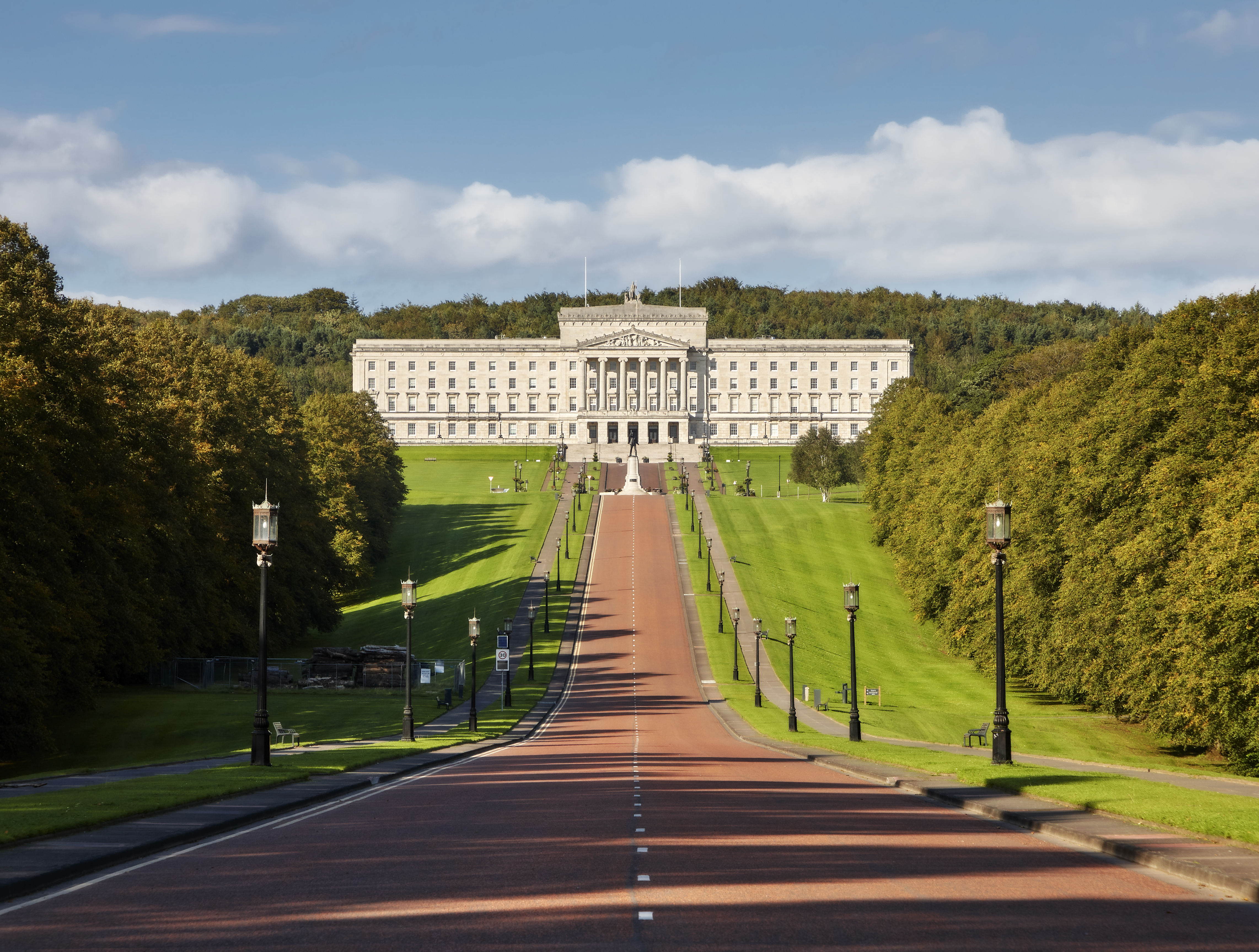
The Parliament Buildings, Stormont, Belfast: 'The Ulster acropolis'
In the second of two articles marking the centenary of the establishment of the Northern Ireland Parliament, John Goodall looks

Stormont Castle: How a 'plain house' in Belfast became the seat of power
A century ago, the Stormont estate was chosen as the seat of the government of Northern Ireland. In the first

John spent his childhood in Kenya, Germany, India and Yorkshire before joining Country Life in 2007, via the University of Durham. Known for his irrepressible love of castles and the Frozen soundtrack, and a laugh that lights up the lives of those around him, John also moonlights as a walking encyclopedia and is the author of several books.
-
 Designer's Room: A solid oak French kitchen that's been cleverly engineered to last
Designer's Room: A solid oak French kitchen that's been cleverly engineered to lastKitchen and joinery specialist Artichoke had several clever tricks to deal with the fact that natural wood expands and contracts.
By Amelia Thorpe
-
 Chocolate eggs, bunnies and the Resurrection: Country Life Quiz of the Day, April 18, 2025
Chocolate eggs, bunnies and the Resurrection: Country Life Quiz of the Day, April 18, 2025Friday's quiz is an Easter special.
By James Fisher